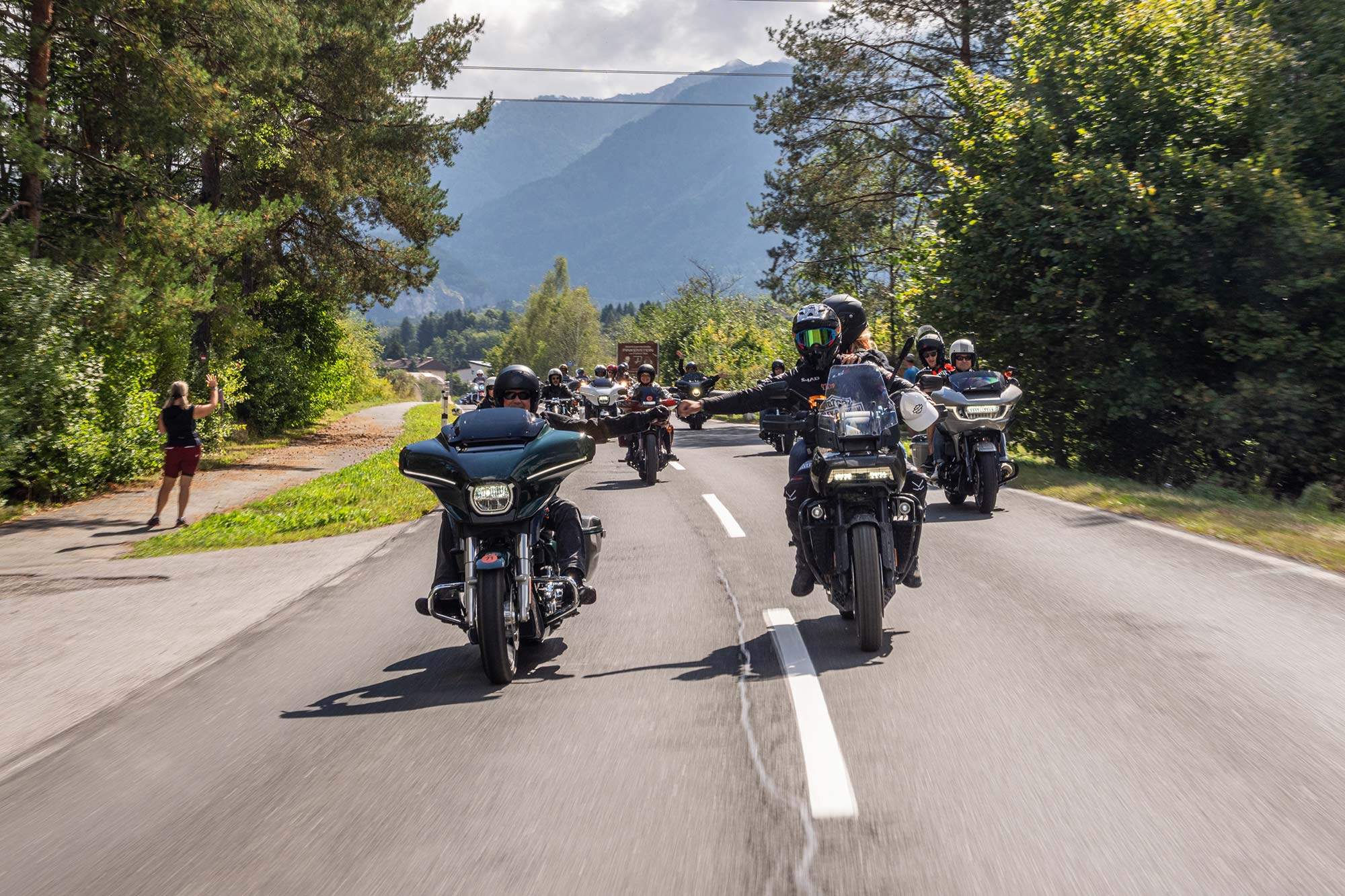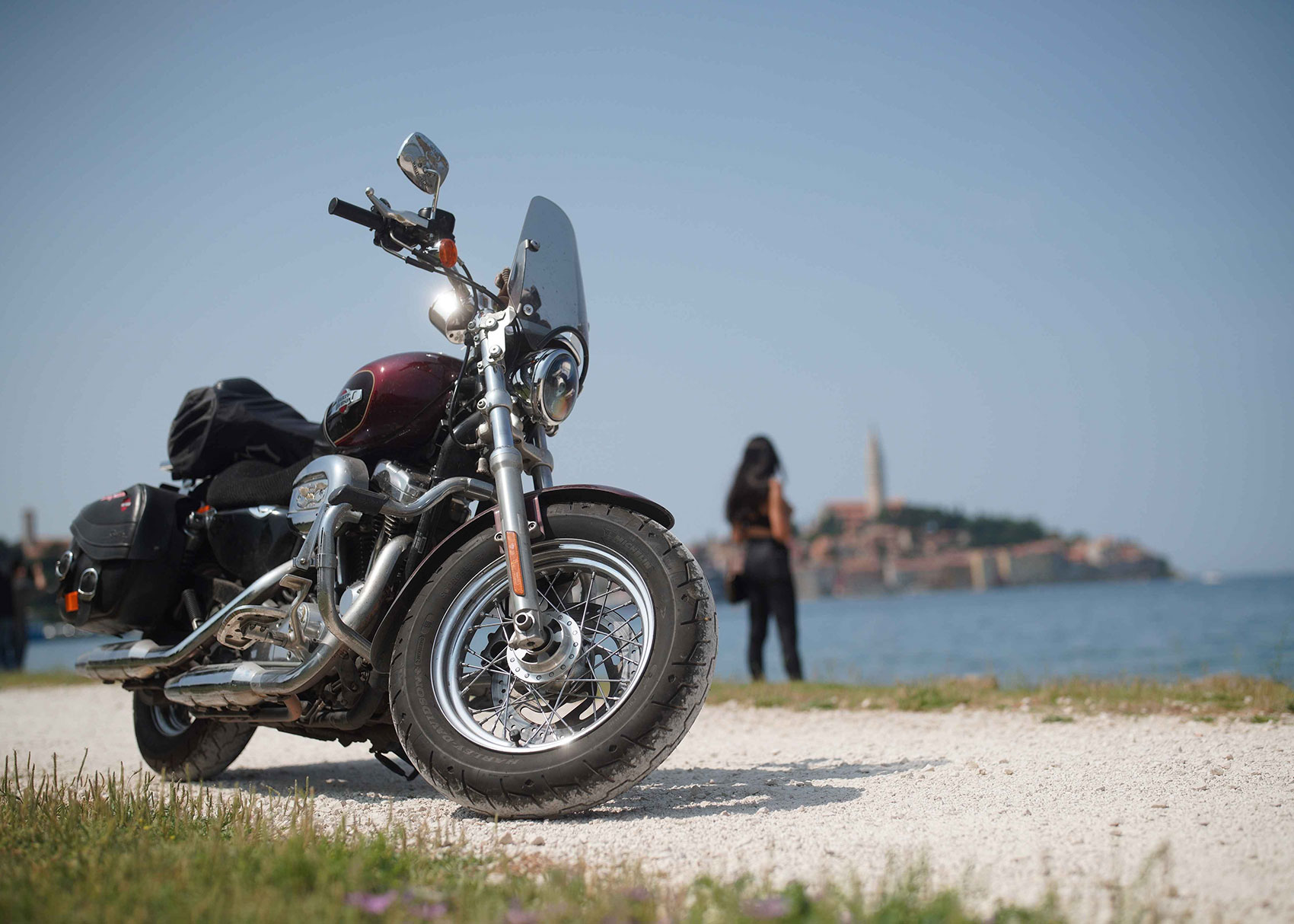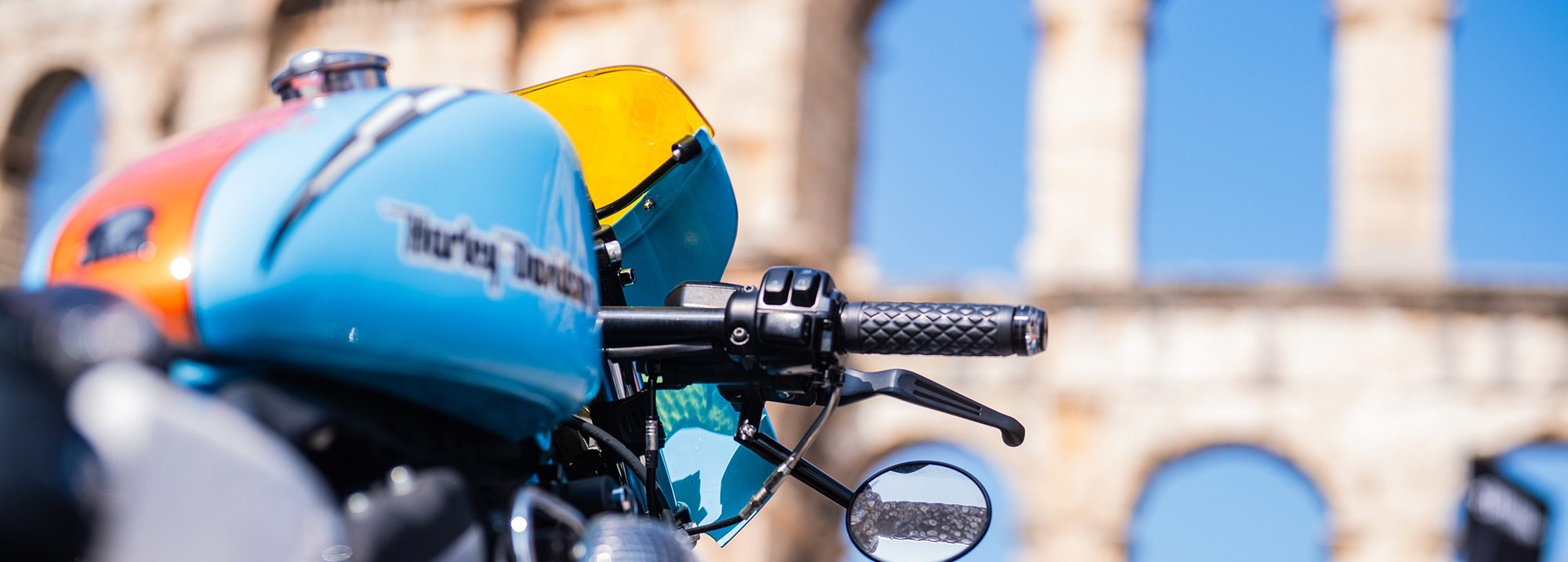
Top 10 Harley-Davidson racing bikes
Harley-Davidson has produced numerous iconic racing models and achieved many race successes in its nearly 120-year history. We look at 10 of the greatest racing motorcycles in the company’s timeline…
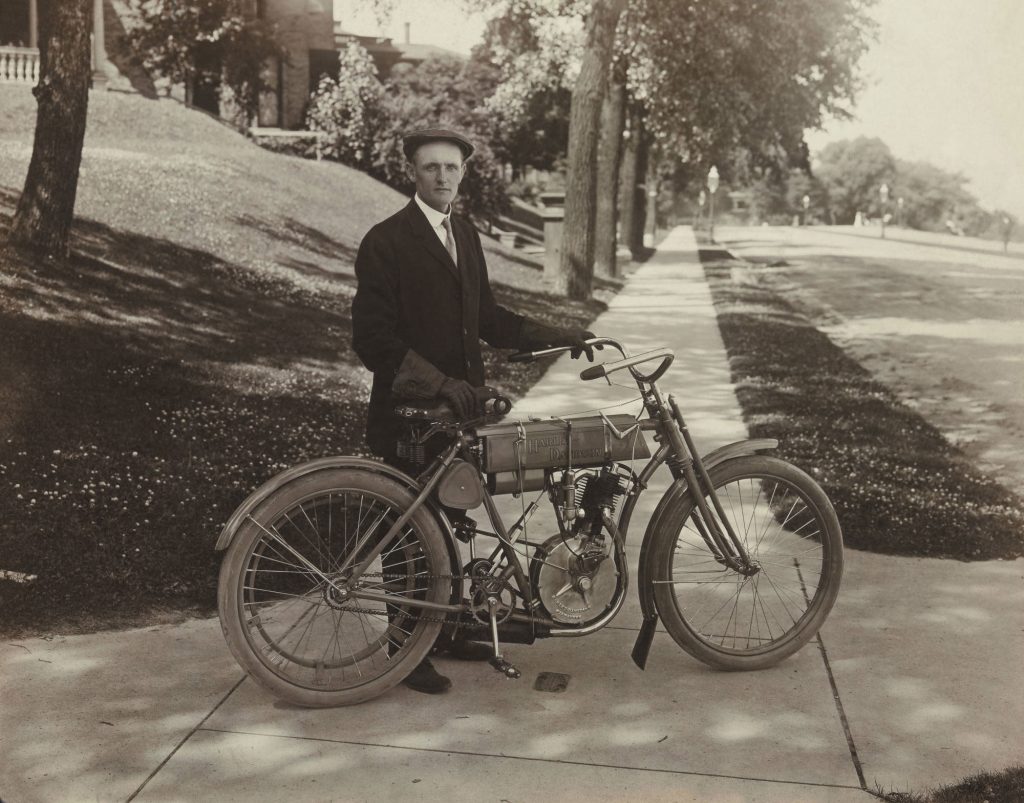
1: MODEL 4 SILENT GRAY FELLOW (1908)
In 1908, the fifth year of production for Harley-Davidson, Company President Walter Davidson beat more than 60 competitors in the company’s major racing debut. In the two-day 365-mile endurance event through the Catskill Mountains in New York, Walter finished first on a Model 4 Silent Gray Fellow with a perfect score of 1,000 points. The event proved the reliability and dependability of the company’s bikes in a period where customers were pondering the choice between a horse and a motorcycle. So confident was Walter in the bike’s abilities that he admitted he didn’t bother carrying any spare parts during the race. The following year the company began production of V-twin engine bikes with the focus on speed as well as endurance, and the direction of the company was set for the next 100 years and more.
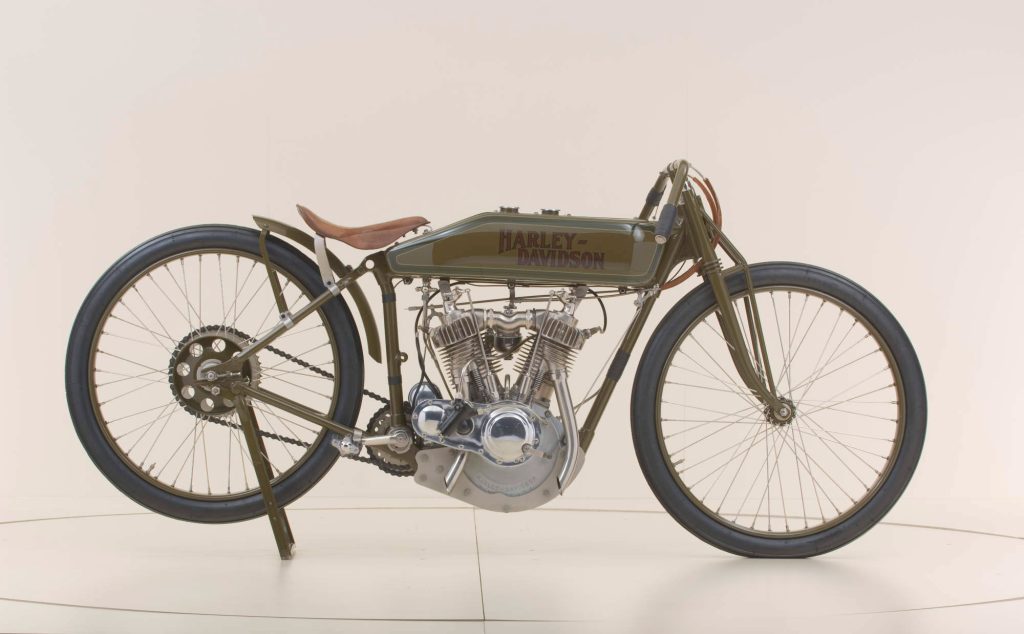
2: F-HEAD BOARD TRACK RACER (1913-1920)
In an era when few people owned any kind of motorised transportation, board track racing must have been a spectacular sight, with motorcycles hitting speeds of more than 100mph on banked oval wooden tracks. The Harley-Davidson® F-Head racer was the undisputed champion of this new sport. With bikes running bicycle tyres, no brakes, single-speed transmission and a total loss oil system, board track racing was not for the faint of heart – Harley-Davidson rider Jim Davis recalled pulling into the pits with a splinter that entered through the palm of his hand and extended up into his forearm. In 1914, Bill Harley set up a racing department, and soon Harley-Davidson was cleaning up in major race events across the country under the name ‘Wrecking Crew’.
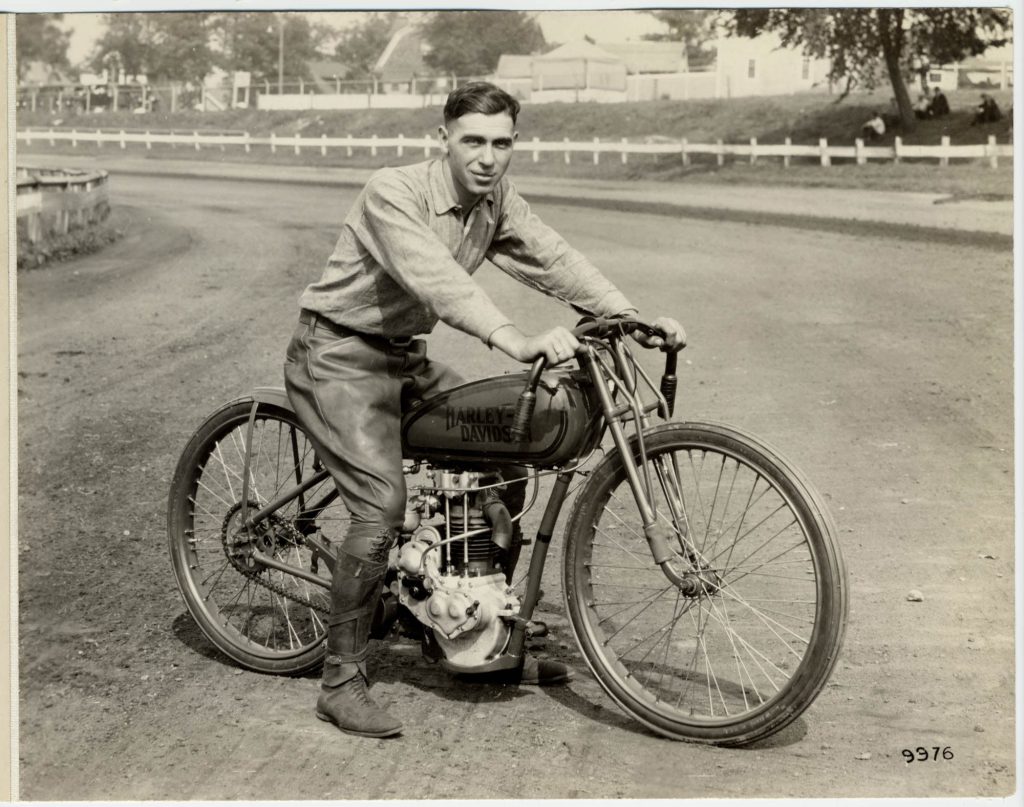
3: MODEL S PEASHOOTER (LATE 1920s)
The Harley-Davidson Peashooter – so named for its distinctive exhaust-popping sound – was introduced in 1926 to compete in the hotly contested AMA 21-cu-in (350cc) class, then dominated by arch rivals Indian and Excelsior. Model AA and BA designations referred to the overhead valve engine configuration, which gave the bikes 50% more power than their Model A and B side valve brethren. Fastest of all was the soon-to-be-legendary dirt-track racing Model S, with a shorter, lighter frame and race tuned to generate 30hp, an outstanding figure for the time. Soon, the Model S was dominating dirt-track races across the country.

4: FLATHEAD WR 750 FACTORY RACER (1940s)
The racing version of the WL model range, also known as the 45, the WR 750 was introduced in 1941 in either dirt-track or WRTT road-racing form, specifically to compete in Class C 750cc racing, a class intended to make racing more accessible to ordinary enthusiasts. Ever more powerful versions of the flathead WR were produced in an arms race against rival Indian with its Sport Scout. Soon the WR was ruling the tracks, winning 19 out of 23 National events in 1948, including at Daytona, where seven of the top 10 bikes were WRs. In 1949, WRs won 19 out of 24 National races. The WR 750 is still a popular choice among vintage flat track and road racers today, partly due to the large number of parts the bike shares with its mass-produced brother the WL, the longest-running bike in the Harley-Davidson range, with production beginning in 1929 and ending in 1973 with the Servicar (which had a 750 flathead engine like the WR, albeit not a racing model).
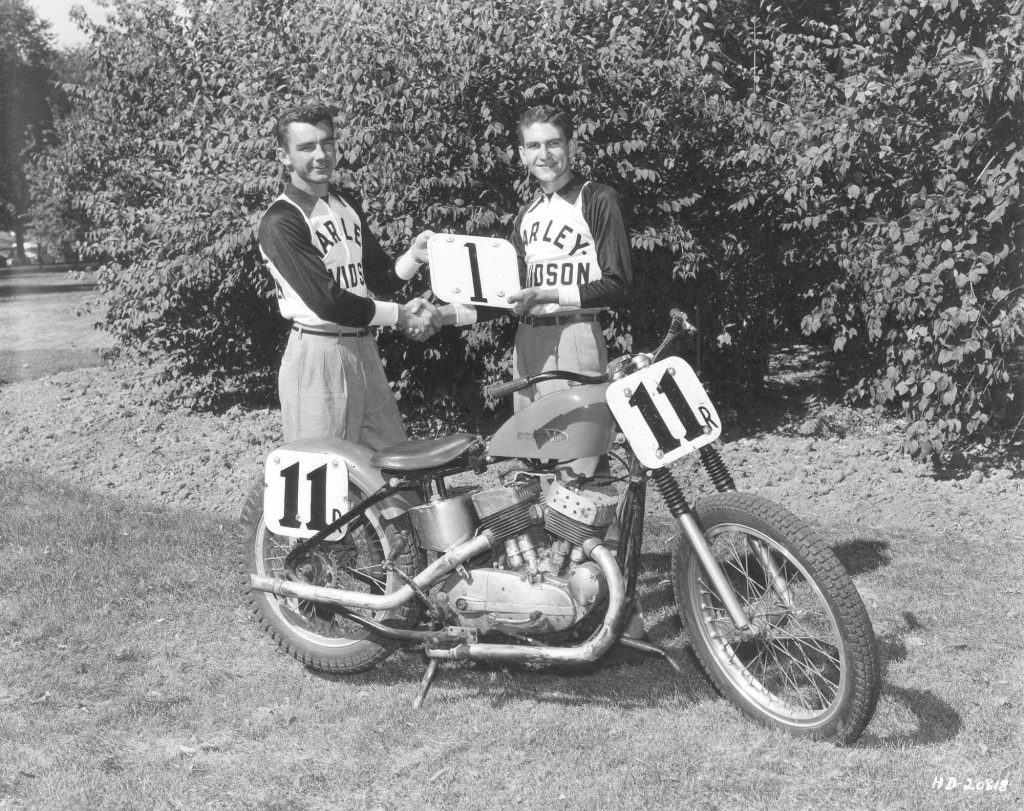
5: KR750 (1952-1969)
When the V-twin flathead KR750 was introduced in 1952, it dominated motorcycle racing in the US, both as the KR750 flat-track racer and later as the KRTT in faired road-racing form. Innovations included a unit-construction engine with foot shifter and hand clutch, hydraulic forks and four-speed transmission. The KR completely dominated racing through the 1950s and ’60s; between 1955 and 1969, 12 of the 15 American Motorcyclist Association (AMA) Daytona 200 National Championships were won by KRs.
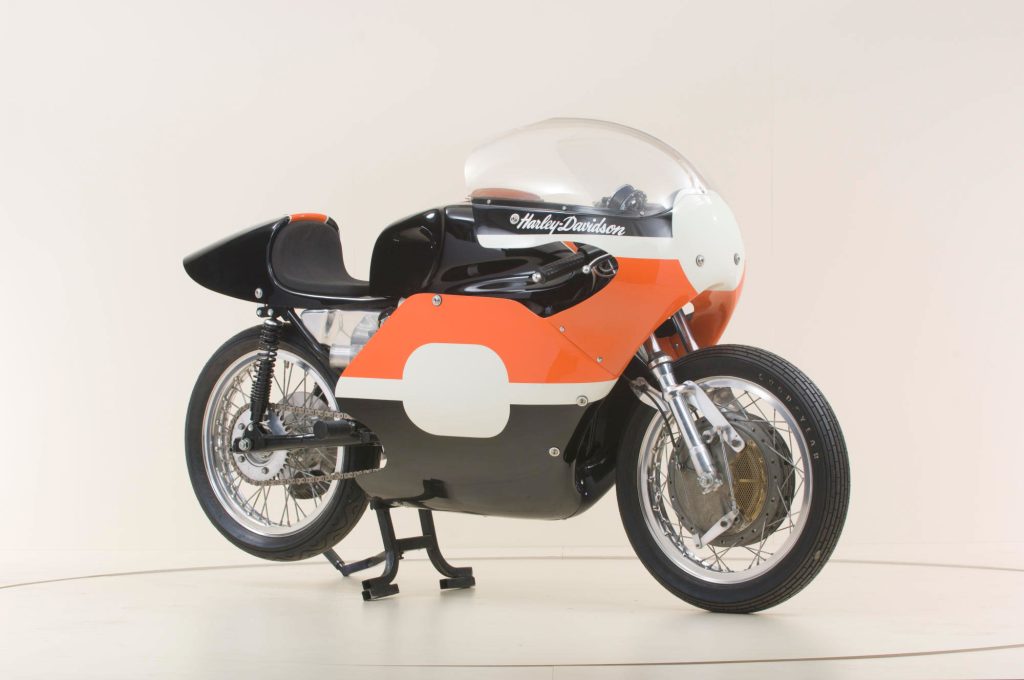
6: XR-750 AND XRTT (1970 ON)
The XR-750 was introduced in 1970 as a competition motorcycle to replace the successful but aging KR. Basically an Ironhead Sportster® XLR with two front cylinder heads and different valves, pistons and camshafts in a racing frame, real success came in 1972 when aluminium cylinder heads were introduced to address overheating issues. The XR quickly went on to become the most successful racing bike in the history of AMA racing, winning 29 Grand National Flat Track Championships between 1972 and 2008 as well as becoming a cultural phenomenon as the favoured bike of stunt performer Evel Knievel. The XRTT was the road racing version of the flat-tracker XR-750 fitted with different suspension, a four-leading-shoe Fontana front drum brake and power output in the 70-100hp range depending on tune. With its beautiful full fairing and elegantly designed bodywork, the XRTT is considered by many to be the most stunning motorcycle ever made by Harley-Davidson. When riders Cal Rayborn and Ray Pickrell took on the fastest British bikes in the 1972 six-race Transatlantic Trophy Races, the stage was set for one of the most thrilling race series in motorcycle racing history. Rayborn on the XRTT shocked the British hosts by winning half of the races, setting the new lap record at Brands Hatch and ending the racing tied for top score – one of the best-ever results for a US team.
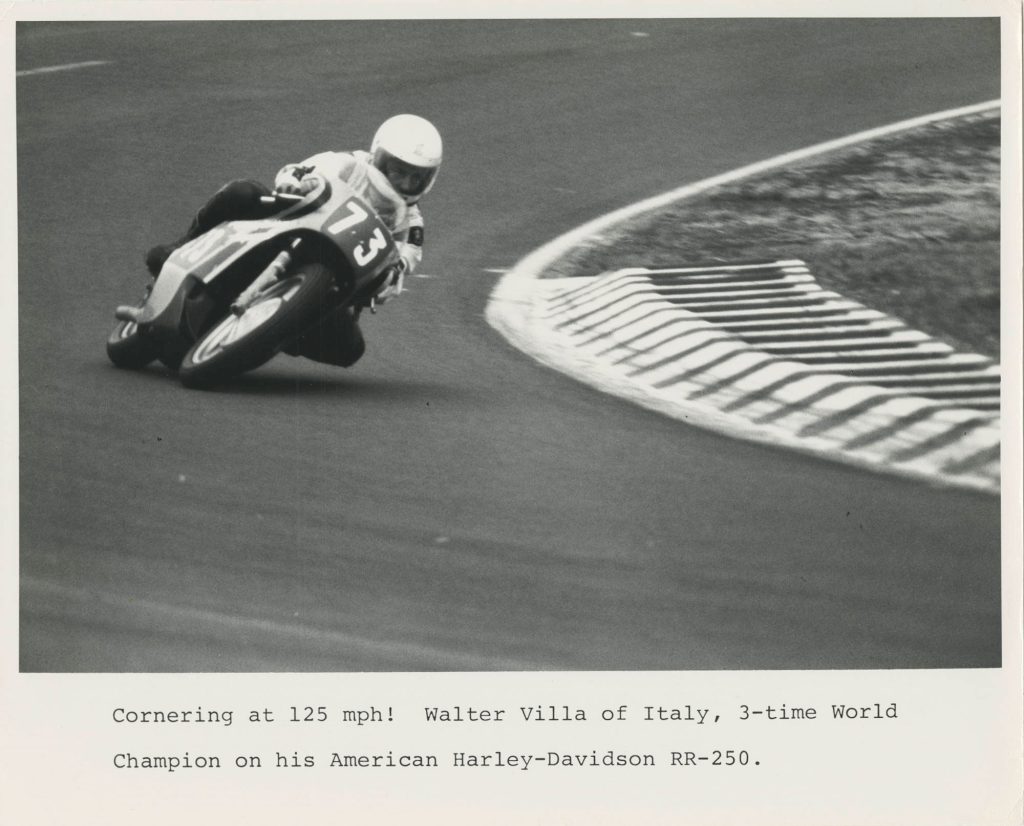
7: RR-250 (1970s)
The RR-250 was a lightweight 250cc racing bike developed by Aermacchi, the Italian lightweight motorcycle company owned by Harley-Davidson at that time. The new bike began to show its true potential in 1972 when Renzo Pasolini scored three Grand Prix (GP) wins, losing the championship by a single point. The following year motorcycle racing legend Walter Villa stepped up as lead rider, dominating 250cc GP racing for the next three seasons. The RR-250 took GP World Championship titles in 1974, ’75 and ’76, and Villa also took the 350cc GP Championship in 1976 on the 350cc road race version, the RR-350. By the end of its development, the RR-250 was producing in excess of 58bhp, more than enough to keep pace with the best Japanese factory racing bikes.
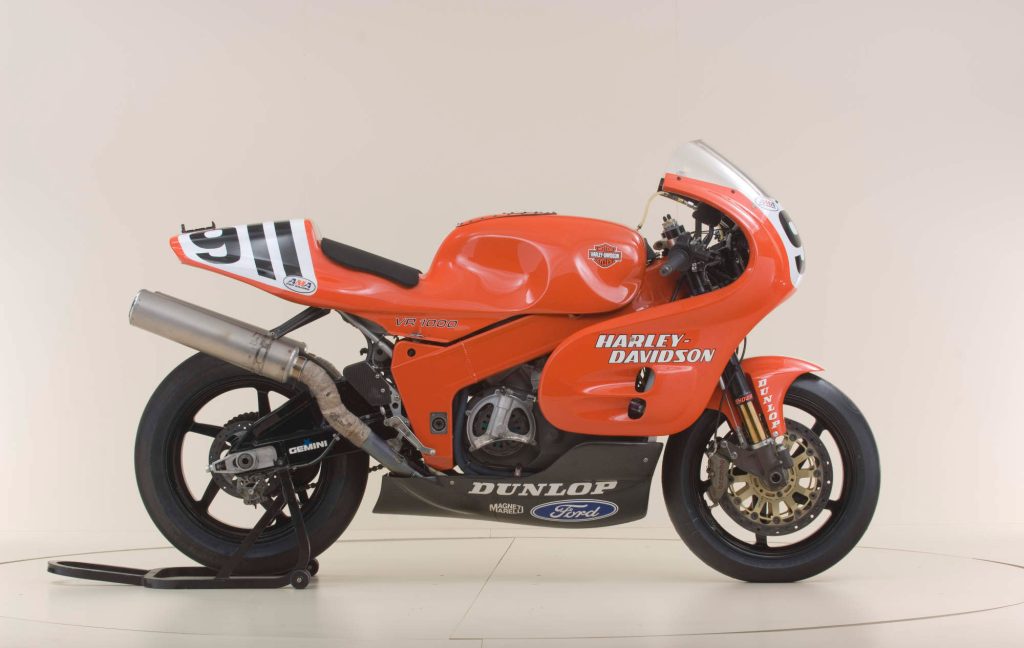
8: VR1000 (1994-2001)
In 1994, Harley-Davidson decided to go Superbike racing, manufacturing 50 VR1000 models to meet the homologation requirements for the Superbike class. These motorcycles used a modern twin-spar aluminium frame and a 60-degree 1,000cc overhead cam, liquid-cooled V-twin engine with six speed transmission generating 135hp and redlining at 10,000rpm. In 2001, in its final form, the engine produced 160hp at more than 11,000rpm, thanks in part to its electronic fuel injection system. Harley-Davidson hired Miguel Duhamel, whose riding style complemented the broad torque curve of the bike, as its lead rider. The bike’s racing career was characterised by a series of almost-wins before H-D withdrew from Superbike racing after the 2001 racing season. Surviving examples are now highly sought after by collectors, while the VR1000 went on to form the basis of the V-Rod® series of street bikes.
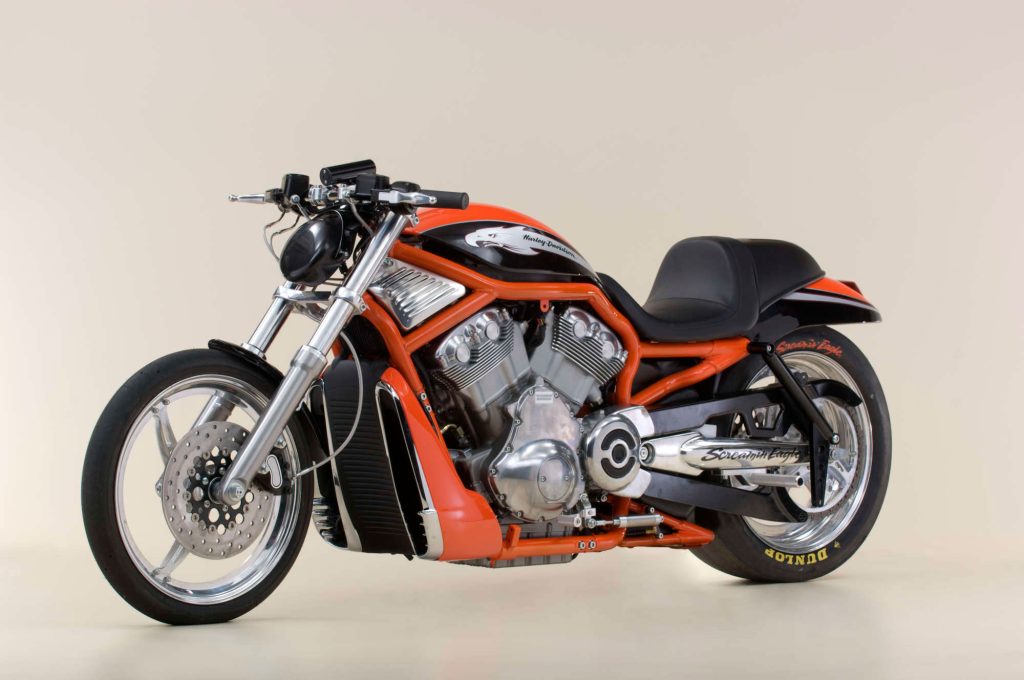
9: VRSXC DESTROYER™ DRAG BIKE (2002-2006)
Harley-Davidson’s Custom Vehicle Operation™ (CVO™) program created the Destroyer strictly for competitive drag racing. The Destroyer was based on the production V-Rod but with solid rear suspension, a 1300cc tuned engine producing 165-plus hp, chain final drive and an electric-over-air shift system designed for quarter mile drag racing. The bike was sold through the Harley-Davidson dealer network and proved capable of solid low 9 second quarter mile times, a true turnkey racer in the hands of any privateer who could meet the $60,000 price.
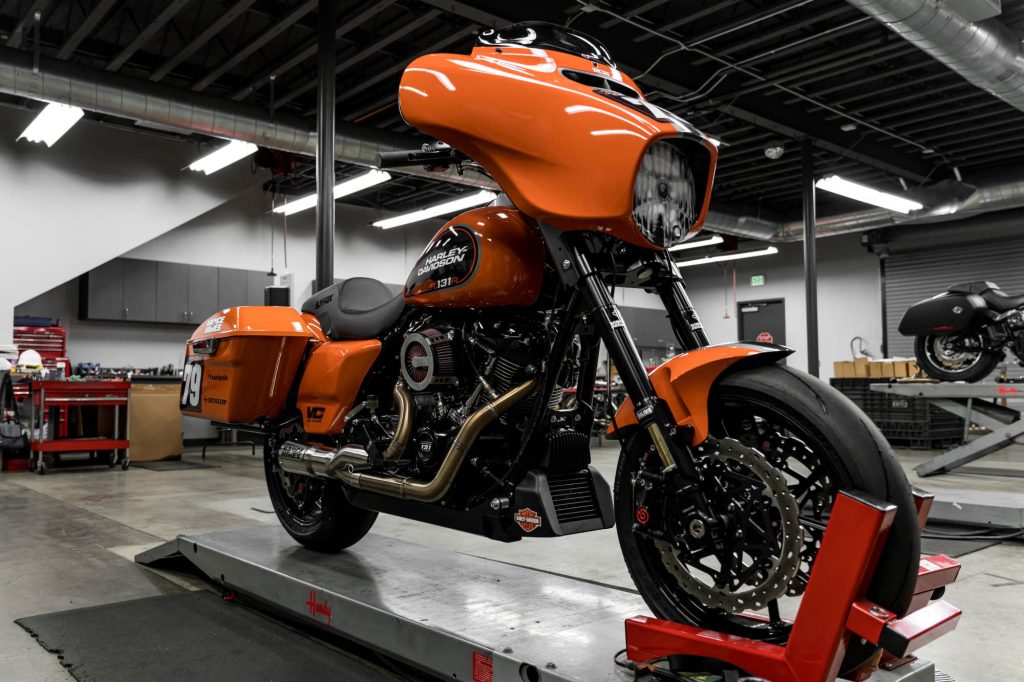
10: SCREAMIN’ EAGLE® FACTORY ROAD GLIDE® (2020-PRESENT)
Designed and built to compete in the MotoAmerica Mission King Of The Baggers Championship, the factory-built Road Glide is powered by the Screamin’ Eagle Milwaukee-Eight® 131 Performance Crate engine producing 150hp and 150ft-lb of torque, allowing for massive power – rider Kyle Wyman achieved 161mph during Daytona testing – in a chassis similar to production models but modified for 55 degrees of lean angle. What started as a one-off exhibition in 2020, born from the increasingly popular high-performance bagger trend, grew into a three-round championship in 2021, which saw Superbike rider and Daytona 200 winner Kyle Wyman and Harley-Davidson stamp their names into the history books as inaugural champions.
Tags:
Read more tales from the Harley Owners Group!
Croatian Sunshine
The 31st European H.O.G. Rally returned to celebrate under blue skies in Medulin from 12-15 June 2025
In the pink
Creative imaginations were let loose on a spectrum of Harley models, with the top entries showcased along the marina
